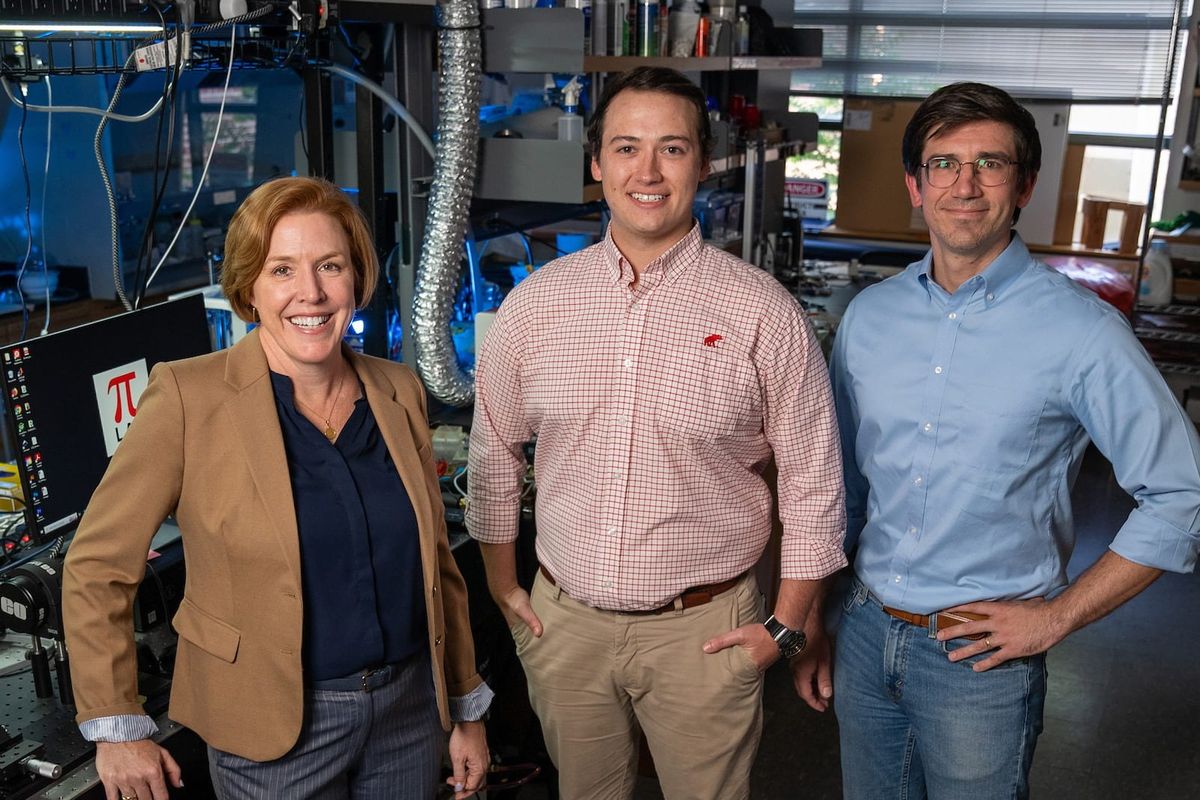Rice, Houston Methodist developing soft 'sleep cap' for brain health research
Researchers and scientists at Rice University and Houston Methodist are developing a “sleep cap” that aims to protect the brain against dementia and other similar diseases by measuring and improving deep sleep.
The project is a collaboration between Rice University engineering professors Daniel Preston, Vanessa Sanchez and Behnaam Aazhang; and Houston Methodist neurologist Dr. Timea Hodics and Dr. Gavin Britz, director of the Houston Methodist Neurological Institute and chairman of the Department of Neurosurgery.
According to Rice, deep sleep is essential for clearing waste products from the brain and nightly “cleaning cycles” help remove toxic proteins. These toxic proteins, like amyloids, can accumulate during the day and are linked to Alzheimer’s disease and other neurological issues.
Aazhang, director of the Rice Neuroengineering Initiative, and his team are building a system that not only tracks the brain’s clearing process but can also stimulate it, improving natural mechanisms that protect against neurodegeneration.
Earlier proof-of-concept versions of the caps successfully demonstrated the promise of this approach; however, they were rigid and uncomfortable for sleep.
Preston and Sanchez will work to transform the design of the cap into a soft, lightweight, textile-based version to make sleep easier, while also allowing the caps to be customizable and tailored for each patient.
“One of the areas of expertise we have here at Rice is designing wearable devices from soft and flexible materials,” Preston, an assistant professor of mechanical engineering, said in a news release. “We’ve already shown this concept works in rigid device prototypes. Now we’re building a soft, breathable cap that people can comfortably wear while they sleep.”
Additionally, the research team is pursuing ways to adapt their technology to measure neuroinflammation and stimulate the brain’s natural plasticity. Neuroinflammation, or swelling in the brain, can be caused by injury, stroke, disease or lifestyle factors and is increasingly recognized as a driver of neurodegeneration, according to Rice.
“Our brain has an incredible ability to rewire itself,” Aazhang added in the release. “If we can harness that through technology, we can open new doors for treating not just dementia but also traumatic brain injury, stroke, Parkinson’s disease and more.”
The project represents Rice’s broader commitment to brain health research and its support for the Dementia Prevention Research Institute of Texas (DPRIT), which passed voter approval last week. The university also recently launched its Rice Brain Institute.
As part of the project, Houston Methodist will provide access to clinicians and patients for early trials, which include studies on patients who have suffered traumatic brain injury and stroke.
“We have entered an era in neuroscience that will result in transformational cures in diseases of the brain and spinal cord,” Britz said in the release. “DPRIT could make Texas the hub of these discoveries.”
 Marcia O'Malley (from left), Barclay Jumet and Daniel Preston developed a wearable textile device that can deliver complex haptic cues in real time to users on the go. Photo by Brandon Martin/Rice University
Marcia O'Malley (from left), Barclay Jumet and Daniel Preston developed a wearable textile device that can deliver complex haptic cues in real time to users on the go. Photo by Brandon Martin/Rice University